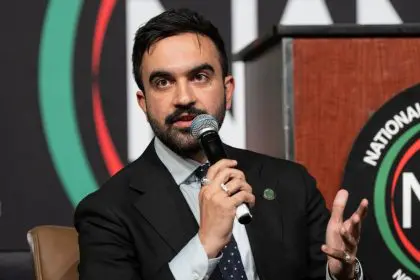The push for prison reform took a significant turn as Kim Kardashian amplified her advocacy efforts by addressing the compensation crisis facing incarcerated firefighters in California. Her social media campaign targets the long-standing wage disparity, specifically calling on Governor Gavin Newsom to revise the decades-old pay rate that has remained stagnant at $1 per hour since 1984. As wildfires continue to threaten communities across the state, this initiative has sparked renewed discussions about fair compensation and human dignity within the criminal justice system.
Understanding the wage crisis
The crisis extends far beyond simple monetary compensation. While civilian firefighters earn competitive salaries and benefits, their incarcerated counterparts face not only minimal pay but also significant barriers to entering the firefighting profession upon release. Despite their extensive experience battling California’s most devastating blazes, many find themselves unable to pursue careers in firefighting due to their criminal records. This disparity highlights a broader systemic issue within the rehabilitation and reintegration process.
The current compensation structure raises serious questions about the value placed on human life and labor within the prison system. At $1 per hour, incarcerated firefighters earn a fraction of minimum wage while performing one of the most dangerous jobs in the state. This rate becomes even more concerning when considering the increasing intensity and frequency of California’s wildfires, driven by climate change and prolonged drought conditions.
Historical context and impact
California’s reliance on incarcerated firefighters dates back to World War II when labor shortages necessitated alternative workforce solutions. What began as a temporary measure evolved into a permanent program that now serves as a crucial component of the state’s firefighting capability. Over the decades, these crews have saved countless lives and billions in property damage, yet their compensation has failed to reflect their vital contribution to public safety.
The program currently operates through 44 conservation camps across California, where incarcerated individuals receive specialized training in firefighting techniques, emergency response, and forest management. This training represents a significant investment by the state, yet the financial returns of this investment primarily benefit the system rather than the individuals risking their lives.
Rehabilitation through service
The firefighting program offers more than just emergency response capability; it provides participants with a sense of purpose and the opportunity to develop valuable skills. Many participants report that the program has transformed their perspective on life and their role in society. Through their service, they demonstrate remarkable courage, teamwork, and dedication – qualities that challenge prevalent stereotypes about incarcerated individuals.
Successful rehabilitation requires both skill development and the opportunity to build a sustainable future. While the program excels at teaching technical and soft skills, the current wage structure limits participants’ ability to save money for their eventual release. This financial constraint can significantly impact their chances of successful reintegration into society.
The economics of prison labor
The financial dynamics of incarcerated firefighting programs reveal a complex intersection of public safety, fiscal responsibility, and ethical labor practices. While the state saves an estimated $100 million annually through the use of incarcerated firefighters, these savings come at a significant human cost. The current system raises questions about the balance between fiscal efficiency and fair compensation for dangerous work.
Critics argue that the program’s cost savings should be partially redirected toward higher wages for participants, which could support their rehabilitation goals and post-release success. This investment in fair compensation could yield long-term societal benefits through reduced recidivism rates and increased economic stability for formerly incarcerated individuals.
Looking toward reform
The movement for fair compensation represents a crucial step toward broader prison reform. Advocates argue that increasing wages for incarcerated firefighters not only acknowledges their humanitarian contributions but also supports their successful reentry into society. The discussion has evolved beyond mere compensation to encompass questions about dignity, rehabilitation, and social justice within the criminal justice system.















